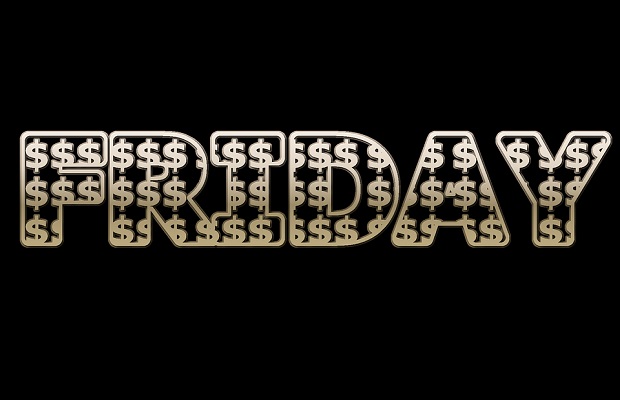This year’s Black Friday saw less stampeding crowds but more money spent, as shoppers opted to go online and on mobiles to grab their bargains, according to new research from Adobe.
In the US, where Black Friday originated as a sale day after Thanksgiving, sales at brick and mortar chains dropped a massive 10% compared to 2015.
Meanwhile, internet sales rose in the double digits on both days and surpassed $3billion for the first time on Black Friday, according to data released on Saturday.
The data highlights the waning importance of Black Friday, which until a few years ago kicked off the holiday shopping season, as more retailers start discounting earlier in the month and opening their doors on Thanksgiving Day.
Key findings from Adobe include:
Additional findings for Black Friday:
The Thanksgiving weekend saw more than 154 million bargain hungry consumers open up their wallets, the National Retail Federation (NRF) said on Sunday. Shoppers spent just over $289 on average, which was down from just under $300 last year. Approximately $214 of that sum were spent on gifts.
In keeping with current trends, Internet buyers outpaced brick-and-mortar shoppers, the NRF’s data showed, with 44 percent of the survey’s respondents buying online while 40 percent went to a store.
“It was a strong weekend for retailers, but an even better weekend for consumers, who took advantage of some really incredible deals,” NRF President and CEO Matthew Shay said in a statement.
The day after Thanksgiving, better known as Black Friday, continued to be the most popular day to go shopping. That day was up 1.3 percent from last year, followed by Saturday. Despite Thanksgiving eve door busters, that day only barely outpaced Sunday as the most popular day, the NRF found.
Underscoring the combination of convenience and technology—as well as retailers offering rock-bottom Web deals—the NRF said more than half of all smartphone and tablet owners used those devices to shop over the holiday weekend.
A separate report by Adobe showed that more than $5 billion was spent online during the holiday weekend, with $1.2 billion alone on mobile devices.
According to Adobe, Black Friday set a new record by topping the $3 billion mark to reach $3.34 billion, a more than 21 percent growth year over year. The shopping holiday was the first in retail history to drive over one billion dollars in mobile revenue at $1.2 billion, Adobe added.
Mobile boom
Meanwhile, PayPal confirms that mobile shopping isn’t a fad and reports that it has seen wider mobile usage during this Thanksgiving holiday than before. In fact, approximately one-third of its transactions were done on a mobile device.
The online payment processing platform surveyed 192 million active customer accounts and 15 million active merchant accounts to pull together its data and found that the total payment volume (TPV) per second on Thanksgiving was $10,781, followed by $15,507 the day after.
This trend is similar to that of other reports, including the ones from Adobe, which claimed that mobile purchases helped to contribute more than $1 billion in revenue on Black Friday.
UK stats- average cart size worth £91
Over in the UK, Black Friday shoppers were up 13.9% and purchasers up 11.9% across major retail sites, according to HookLogic.
On Black Friday, the highest shopper increase over 2015 was at 12am GMT as consumers stayed up into the morning to take advantage of deals that began at midnight. Shopping that hour rose 161% YOY.
Shopping on Black Friday peaked from 7-9am and 6-9pm GMT. Shoppers took advantage of great deals before they went to work and then once again after dinner.
Average Black Friday cart size was 1.8 units; with an average total cart value of £91.30 and individual unit value of £50.55.
The top 20 products in the Toys and Consumer Electronics (CE) categories’ most searched items between 1st – 21st November 2016 (ranked by volume of searches), include:
“Black Friday may have started as a US-based holiday, but it has now become firmly entrenched as a key part of the UK retail calendar,” said HookLogic Managing Director, Europe, Ben Cooper.
“With the shift of shopping to mobile phones, and the rise of Click & Collect, HookLogic Sponsored Products are a way for brands to drive attention to their products in an environment where it is even harder to achieve visibility and drive sales.”
Ecommerce in the UK is expected to reach £148 billion (Ecommerce Foundation, April, 2015) in 2016. With the double-digit increases in both shoppers and purchasers online seen from HookLogic data, retailers and brand marketers need to meet the different shopping processes that online and mobile environments present.
HookLogic will be issuing weekly ecommerce data reports in the UK throughout the season.
